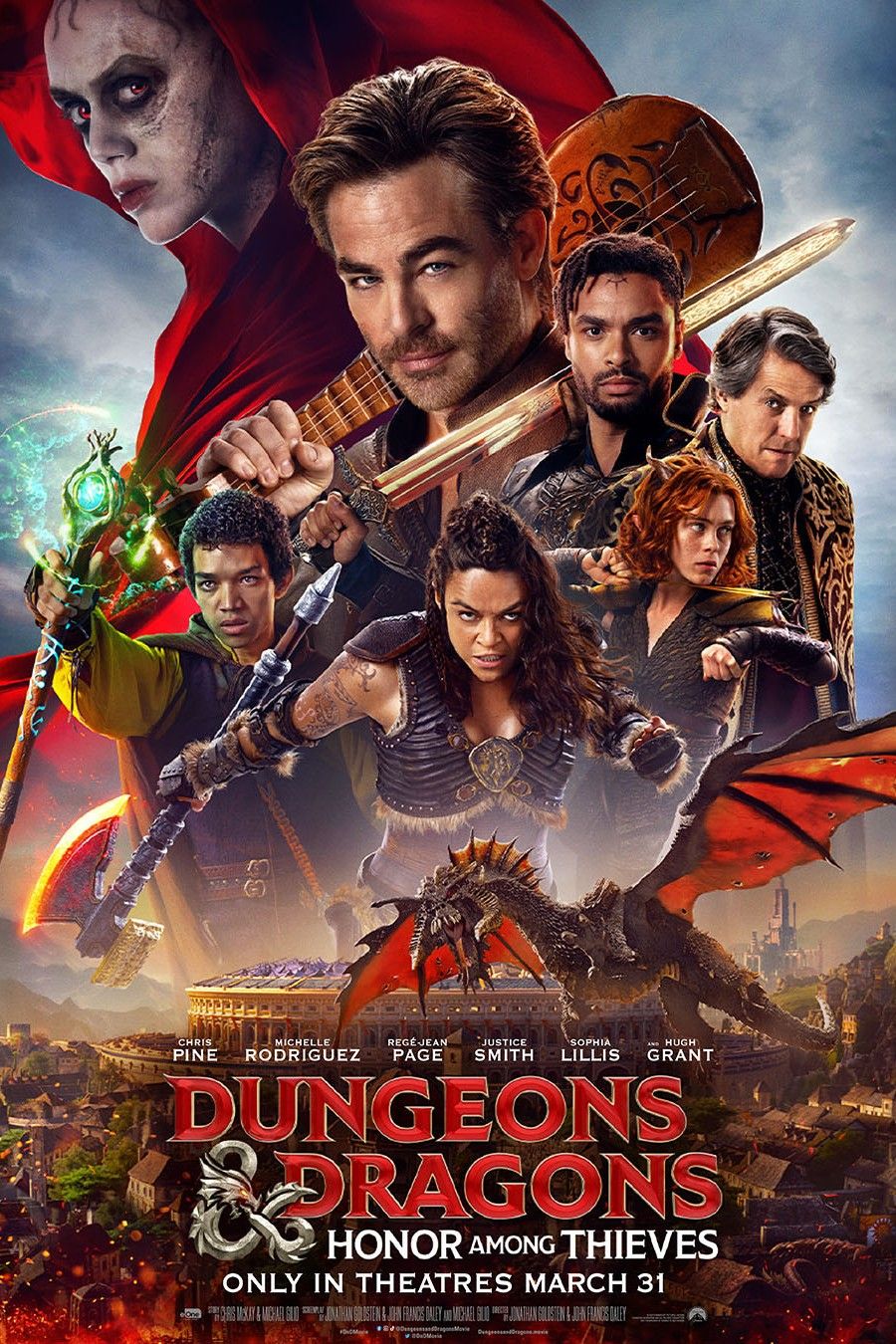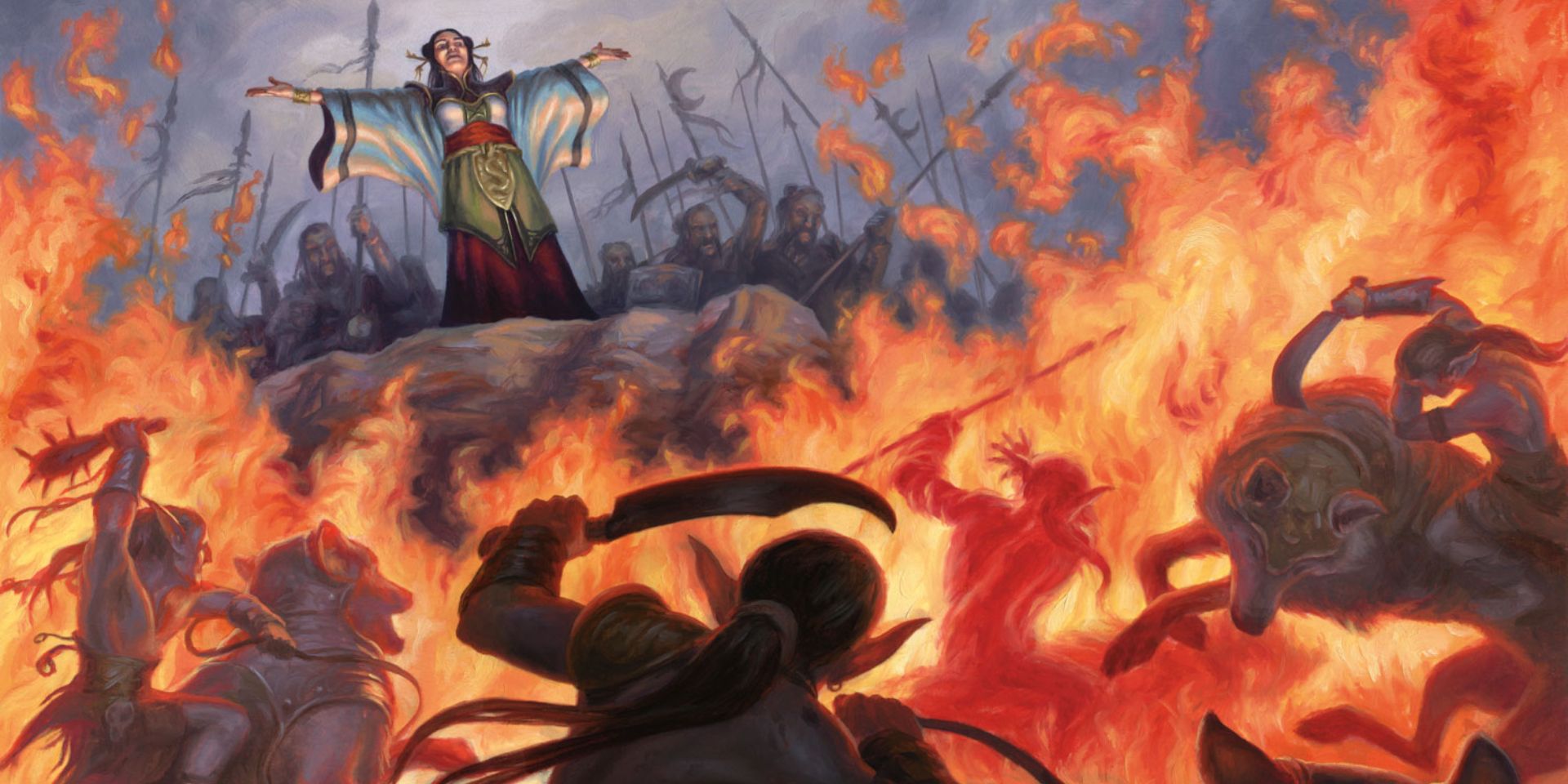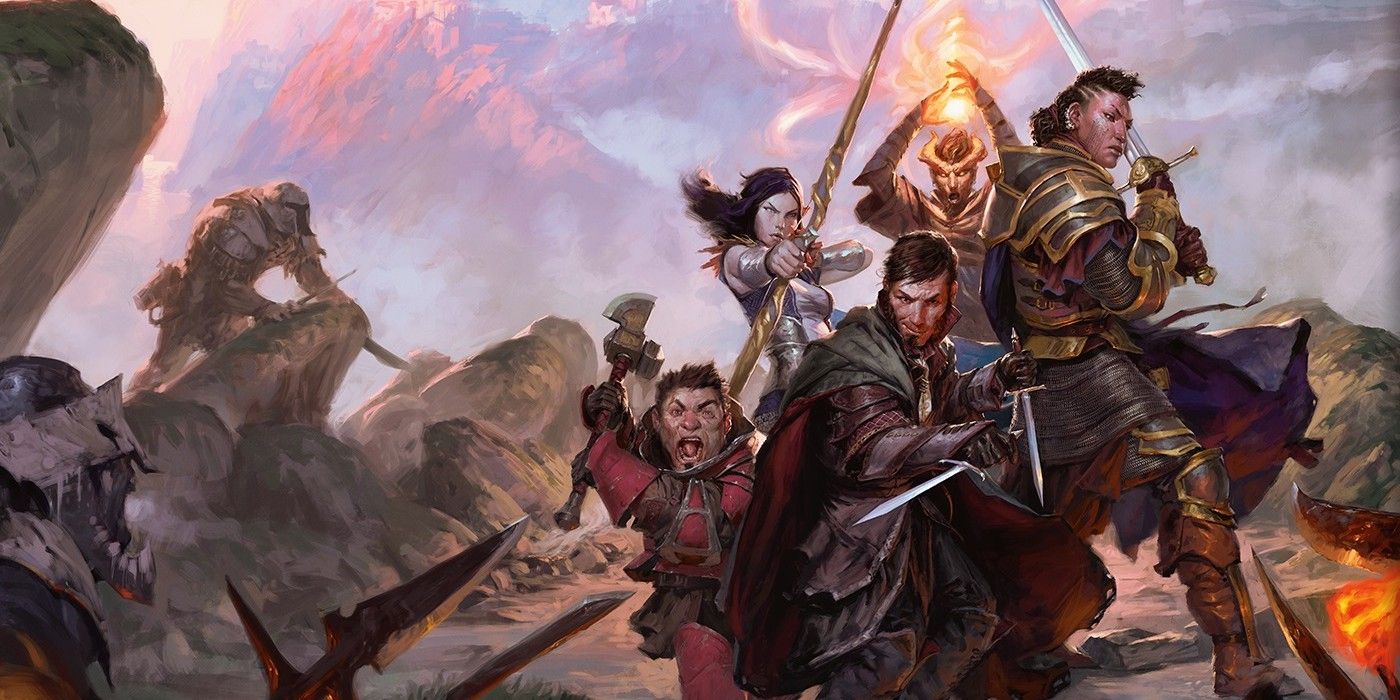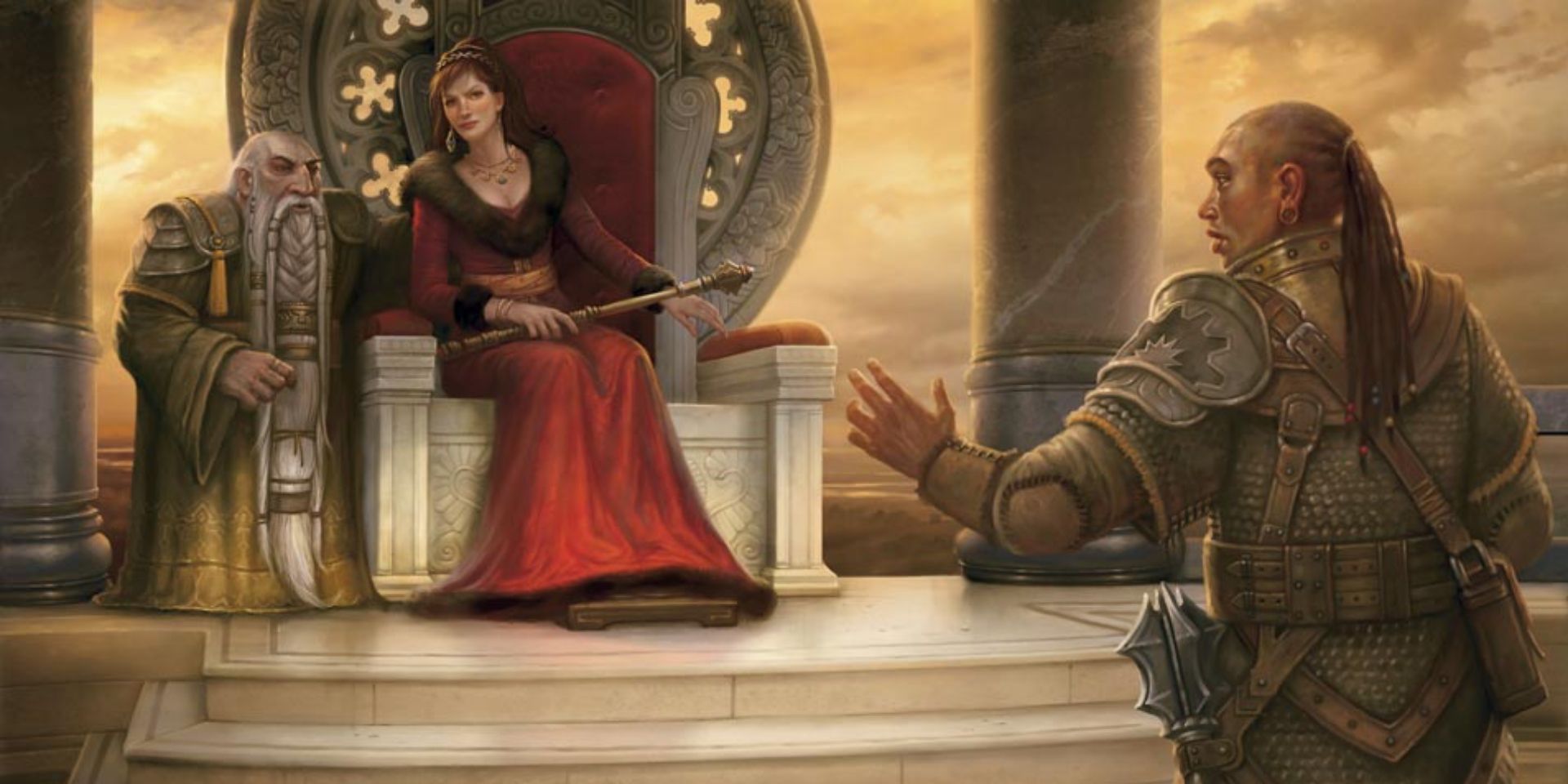Dungeons & Dragons: Honor Among Thieves
Early keep - crawl RPGs likeDungeons & Dragonstook the elaboration of traditional tabletop war - games and added the factor of storytelling , giving both player characters and non - player character emotional profoundness and make their triumph and setbacks during turn - based fighting scenario have worked up weight - but what take in RPG combat fun ? Even now , the quality of combat rules in tactical RPGs likeD&D5th Edition or more narrative RPGs likeApocalypse Worldcan strongly impact how much fun players have . Rich but intuitive fight auto-mechanic can make RPG combat thrilling and rewarding , while overly complex or rigid fight mechanism can make RPG combat a dull exercise in die - rolling and rag - marking .
BeforeDungeons & Dragons , there wasChainmail , a medieval miniatures wargaming supplement and anearly prototype ofD&Dcampaignscreated by Gary Gygax and adopt by Dave Arneson for his experimentalBlackmoorRPG political campaign . Most of the rules in the Chainmailbooklet were designed to sham the complexities of mediaeval warfare , with gameplay mechanics for mounted armed combat , heavy weapon fire , team spirit , study prisoners , etc . Appendix E ofChainmail , however , contain the germ of what would becomeD&Dproper ; principle for cast trick , rules for phantasy creatures like elementals an elves , rules for Hero Units who could make multiple hits , and even the quintessential " Saving Throw " mechanic for determining how well fibre can bunk dangerous destiny .
pertain : D&D : Dragonlance Is About To retell story 40 old age Later

BothDungeons & Dragonsand other tactical tabletop RPGshave rule derived from Greco-Roman miniatures warfare - plot like H.G. Wells’Little Warsand ancient strategy plot like Chess ; there ’s a game display board with satisfying or hexagonal spaces where players can move , and a scrap - rhythm system where players and Dungeon Masters take turns prompt token and declaring legal action . Many late tabletop RPG systems likeApocalypse WorldorChronicles Of Darknesseschew these ' control panel biz ' rules in favor of " Theater of the Mind " combat systems where player movement is more abstract . Even the most narrative tabletop RPGs , however , need to uphold the trace principles for make their conflict resolution system tactically rich and narratively rewarding for player .
Tactical RPGs Like D&D Give Players Multiple Combat Choices
The corecombat rules of most tabletop RPGscan be boiled down to this watch over precept : if a player wants their eccentric to assail an enemy , they key out their action and flap die to see if they succeed . An RPG combat system with nothing but this rule , however , would be very thudding in practice , since histrion would n’t have any interesting tactical choices to make . For this reason , designers of tabletop RPGs spend a lot of time playing period - try out their fighting rules in rescript to create a biz where armoured warriors , acute - eyed sharpshooters , insightful magic - user , and silver - tongued scoundrels can all be useful in a fight . In practice , there are many way to make this sorting of RPG fighting system .
Criticized for not " feel like"D&Dback in the day , the4th Edition ofDungeons & Dragonsis glorify today for having a very well - balanced and tactically rewarding crook - ground combat system ; nearly every role division , drift from fireball - chucking Wizards to the infamous Warlord , have useful power for prejudicial foe , hinder their apparent motion between board tile , and improving the tile movements of their ally .
concern : Tabletop RPGs Fans Of Shin Megami Tensei & Persona Will have a go at it

On the opposite spectrum fromD&D4th variant lie narrative RPGs such as theRhapsody Of BloodandVoidheart Symphony . Both these RPGs , published by UFO Press , useApocalypse World - fashion regulation to simulate the boss battle segments of video game RPGs ; essentially , player can attempt to make an opposition vulnerable by attacking them , disquiet them , evade them , or pinpointing their weaknesses , then use the create " opening night " to deal damage and strip forth one of the opposition ’s special qualities . Despite the absence seizure of game boards or mathematical function , this story combat system captures the ebb and rate of flow of boss battles inCastlevaniaorPersona 5tabletop - stylewhile repay multitude for using actions besides attacks .
Tactical RPGs Like D&D Reward Players For Creative Character Builds
In tabletop miniatures war games like the nineteenth centuryKriegspielor the more contemporaryWarhammer , most of the unit players control have a cook set of movements and actions they can take on their twist . Most tabletop RPGs , in line , get players customise the abilities , equipment , and backstories of the undivided characters at the beginning of the game and whenever they level it up . For this reason , character customization is a vital part of thetactical experience inDungeons & Dragonsand other similar roleplaying game . Tabletop RPG house decorator concerned in making a playfulness and " crunchy " combat organization for their game should pay near attending to how the power of player characters and their items intersect during RPG play - testing session ; if a certain combining of attributes , abilities , or tools produce extremely powerful or hard - to - kill characters , designers should equilibrise this " meta " build , but leave it in their RPG as a reward for players who try out with the eccentric creation mechanics .
Tactical Tabletop RPGs Like D&D Should Prioritize Narrative Over “Video Game Logic”
The philosophy known as Old School Renaissance orOld School Revival in RPG designdeliberately tries to catch the flavor of earlyDungeons & Dragonscampaigns , games where donjon were deathtraps , monster encounters could be perfectly unbalanced , and player could go through an entire binder of characters trying to crush module like the infamousTomb Of repugnance . To balance out the high risk of fighting , many OSR RPGs have peculiar encounter rules where Dungeon Masters cast dice to see if the puppet PCs encounter are at once unfriendly , along with " Morale " rules where grievous enemies might flee the battlefield rather than fight back to the death .
The two aforementioned rules are excellent examples of how combat in a tabletop RPG does n’t have to be like scrap in classical computerRPGs likeBreath Of The Wild , Final FantasyorThe Elder Scrolls , where unfriendly Nonproliferation Center snipe the role player character on sight and fight to the bitter end . As an exercise of imagination throw structure by write rule , scrap in tabletop RPGs can be purpose through a range of a function of consequence other than death if it would make sense within the narrative . An adventuring party in a keep - crawling RPG should theoretically be able to intimidate , trick , or reform a unfriendly group of brigand ( or be taken prisoner , redeemed , or stripped of riches if they recede to the brigand ) . In a New old age filled with high - faithfulness , action - packed computer RPGs , its all the more important fordevelopers and playtesters of tabletop RPGslikeDungeons & Dragonsto play to their enduringness and create rule that lease players resolve combat through out - of - the - box approaches .
Next : D&D : Tricks For Fighting Invisible Enemies



